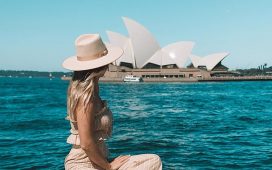This article is part of FT Globetrotter’s guide to Tokyo
Queueing to enter one of Tokyo’s modern art museums, we are warned: the water is knee-high in some areas. And mirroring materials are used on some floors. I’m relieved to be wearing a modest pair of shorts.
We are at teamLab Planets, an interactive exhibition where visitors wander through large “body-immersive” displays — multisensory experiences that include wading through water and crouching in a mirrored garden amid thousands of moving, real flowers. It draws millions of visitors each year, and has become so popular that it’s now estimated that 1 in 10 travellers to Japan will go.
“Tokyo is the city of tomorrow,” says the local I’m with, citing the metropolitan government’s vision for the future. “And this is a good representation of that.”
Planets is the brainchild of the Tokyo-founded art collective teamLab, a genre-bending group of artists, programmers, engineers, animators, architects and others, who together explore the confluence of art, science, technology and the natural world with their work.
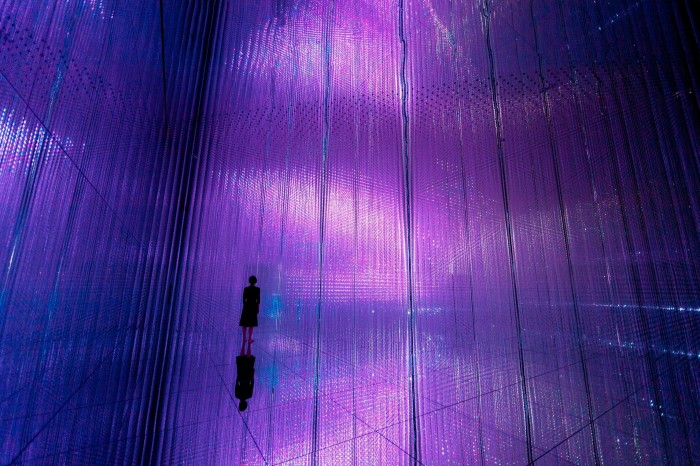
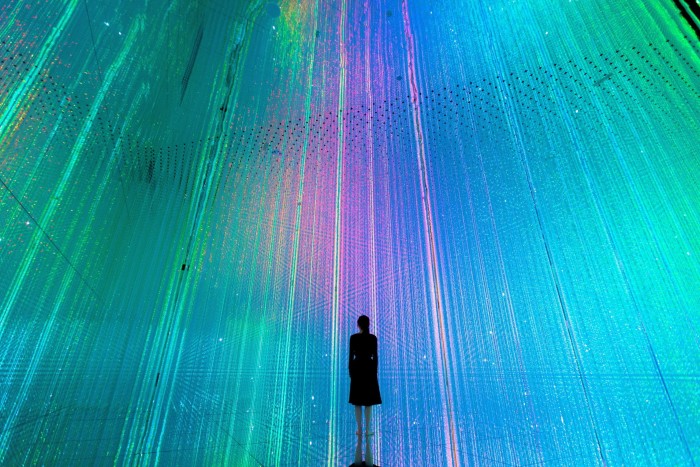
“Enter barefoot, immerse your body with others in the artwork spaces and become one with the world,” a sign reads as we enter, taking off our shoes and socks and squirrelling them away into lockers. I’m not sure what, exactly, is being asked of us, but I’m willing to go with the flow.
In near-pitch darkness, we walk single file up a small incline towards the first display, as tepid water, pouring from above like a waterfall, rushes past our feet. (There is an accessible detour available.)
After towelling ourselves dry, we emerge into the first room, as ethereal, astral-sounding instrumental music blares around us and smiles explode across our faces. Called the Infinite Crystal Universe, it’s an utterly dazzling, pointillism-inspired maze of stringed LED lights tightly hanging together in a large, mirrored space — glittering, pulsing and changing colour. I can’t help but take out my phone to film the “stars” around me, which is also the part of the fun: teamLab has programmed its works to respond in real time to specific movements, including the use of smartphones, by the people in each space. Visitors can influence what they see.
“We are very interested in how to bring people inside our creativity,” says Takashi Kudo, a member of teamLab, who explains the tech behind the Infinite Crystal Universe. “Comparing it to a physical material like oil paint or spray paint . . . everyone can draw inside this space,” he continues. “What we made is the paint — but it’s applications. It’s software.”
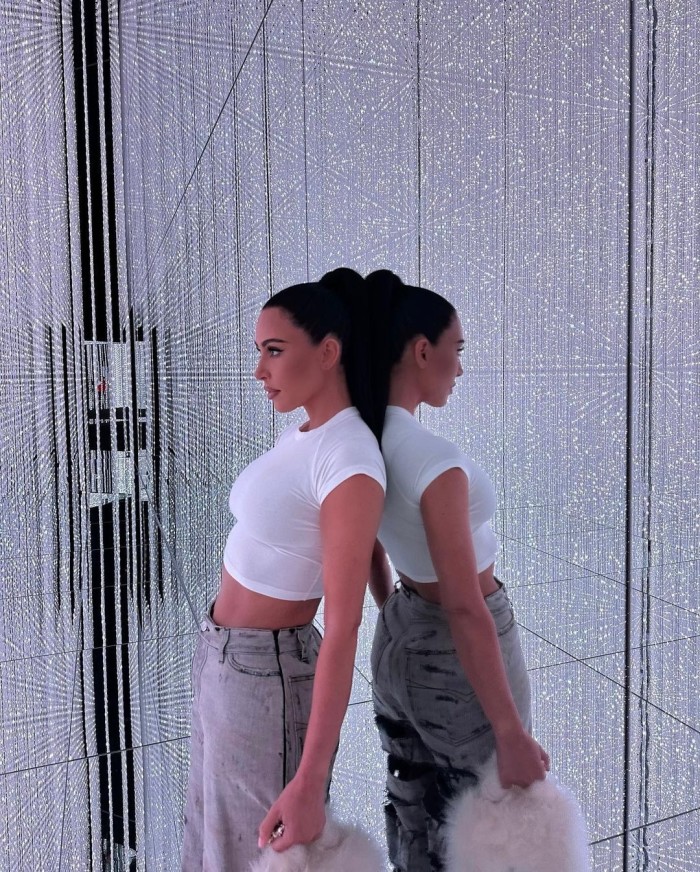
Since teamLab Planets opened in 2018, it has become a social media sensation: millions of videos of its share-worthy artworks have been uploaded to platforms like TikTok and Instagram, including by celebrity visitors (with gargantuan followings) such as Kim Kardashian, Dua Lipa, Lewis Hamilton, David and Victoria Beckham and K-pop royalty BTS and Black Pink. The DJ Diplo even played a live set at teamLab Planets for YouTube in March.
“Business-wise, from a promotional point of view, [social media] is very important,” Kudo says. TeamLab doesn’t partake in traditional marketing. Speaking more broadly, he says: “We try to create something we believe is beautiful . . . and if someone wanted to memorise that moment or share that moment,” he continues, “that’s in the territory of creativity and we believe that creativity is very important.”
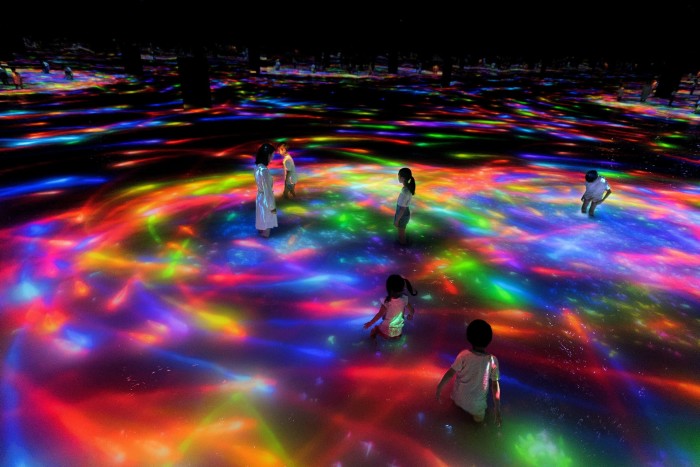
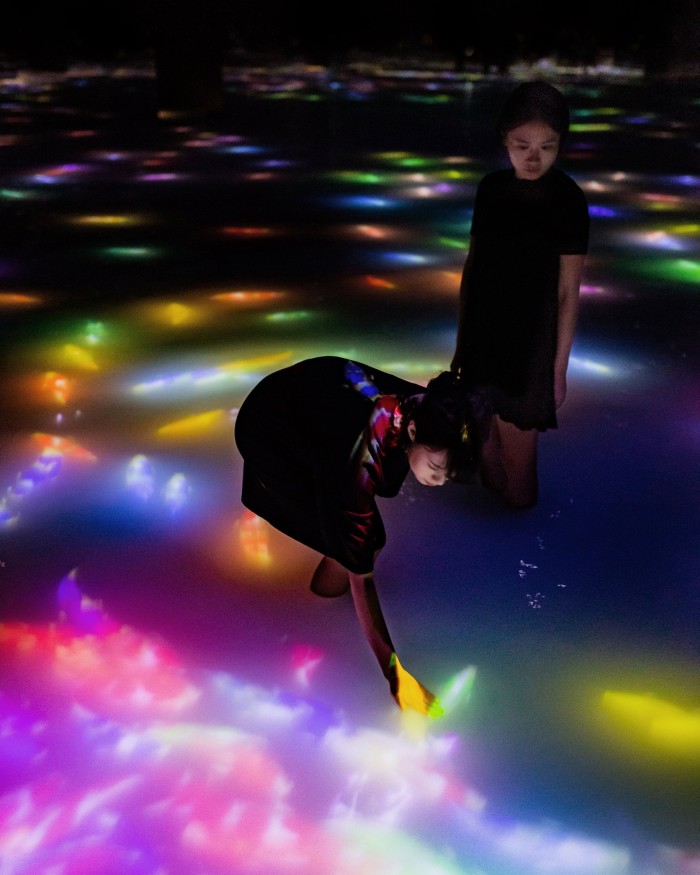
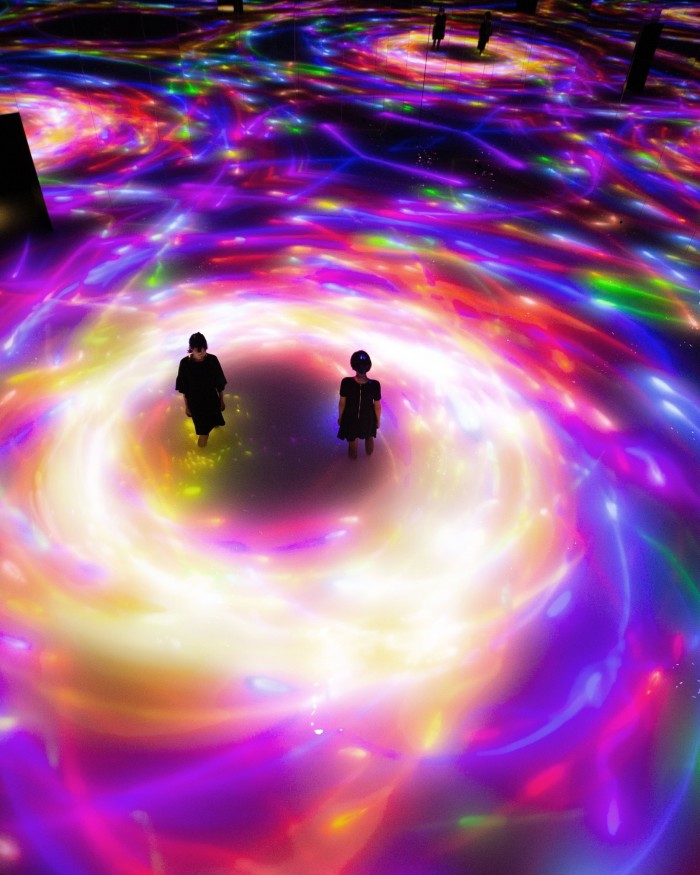
As other visitors roll up their trousers, we wade into knee-deep water, where projected images of koi swim around our legs along the surface, reacting to our movements. With the wooziness of jet lag, I wonder if this is what psychedelics are like, as a nearby group of giggling children try to catch the fish with their hands like little grizzly bears. The koi burst into flowers when touched and scatter away — the rapid response of a complex algorithm in a partly real, partly virtual space that is thrillingly interactive.
In the corridors between displays, the texture and temperature changes underfoot, aimed at engaging the senses: sometimes we wander through water, other times we pad along squidgy, sponge flooring.
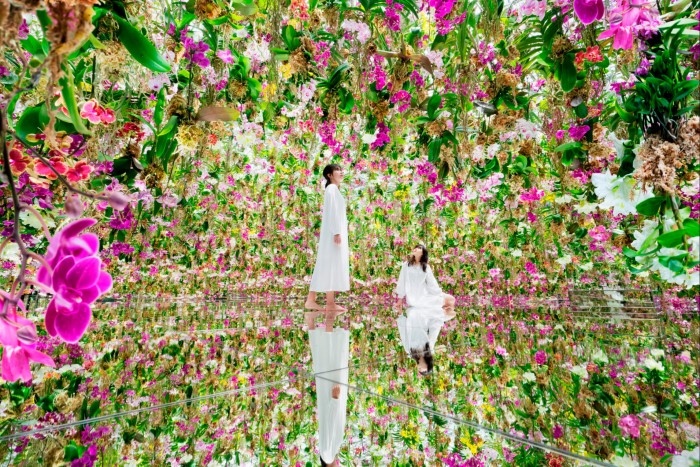
Eventually, we are on our hands and knees, and crawl into one of the last exhibitions, which is perhaps the most transfixing: the Floating Flower Garden, where more than 13,000 orchids float up and down around us in an entirely mirrored room as though we are being hugged by a Monet. It is a take on a Japanese Zen garden, which were created for Buddhist priests to learn to become one with nature and is inspired by a parable in their theological training. “When someone looks at a flower closely, the flower looks back,” teamLab explains. Orchids were specifically chosen for this work because they can survive without soil by absorbing water from the air — and here they are, living, growing and blooming around us.
While Tokyo is the collective’s home base — it also has a second museum, Borderless, in the city’s Azabudai Hills — teamLab experiences have popped up around the world, from Beijing to Miami. This year it is expected to open a Borderless site in Jeddah, as well as museums in Abu Dhabi and Kyoto, and from May 10 there will be an exhibition at the Pace Gallery in New York. Next year, it will head to Hamburg and Utrecht.
As we leave, with camera rolls groaning with photos and videos, my inner cynic can’t help but poke holes in my millennial sensibilities with the feeling that, in part, this is art for the Instagram generation — an experience that has been created and curated to be shared on social media. But does that matter? TeamLab’s work is a delight, a mind-boggling and mesmerising marriage of visual and installation art with sensation — and a fascinating example of how technology can be used to influence our real-world experiences. It’s the art of tomorrow.
teamLab Planets Tokyo, Toyosu 6-1-16, Koto-ku, Tokyo. Directions
Niki Blasina was a guest of Four Seasons Tokyo. Adult tickets to teamLab Planets are ¥3,800 ($24/£20) Monday—Friday and ¥4,200 ($27/£22) on weekends and public holidays)
Have you experienced a teamLab exhibition? Tell us about it in the comments below. And follow FT Globetrotter on Instagram at @FTGlobetrotter
Cities with the FT

FT Globetrotter, our insider guides to some of the world’s greatest cities, offers expert advice on eating and drinking, exercise, art and culture — and much more
Find us in Tokyo, New York, Copenhagen, London, Hong Kong, Paris, Rome, Frankfurt, Singapore, Miami, Toronto, Madrid, Melbourne, Zurich, Milan and Vancouver

